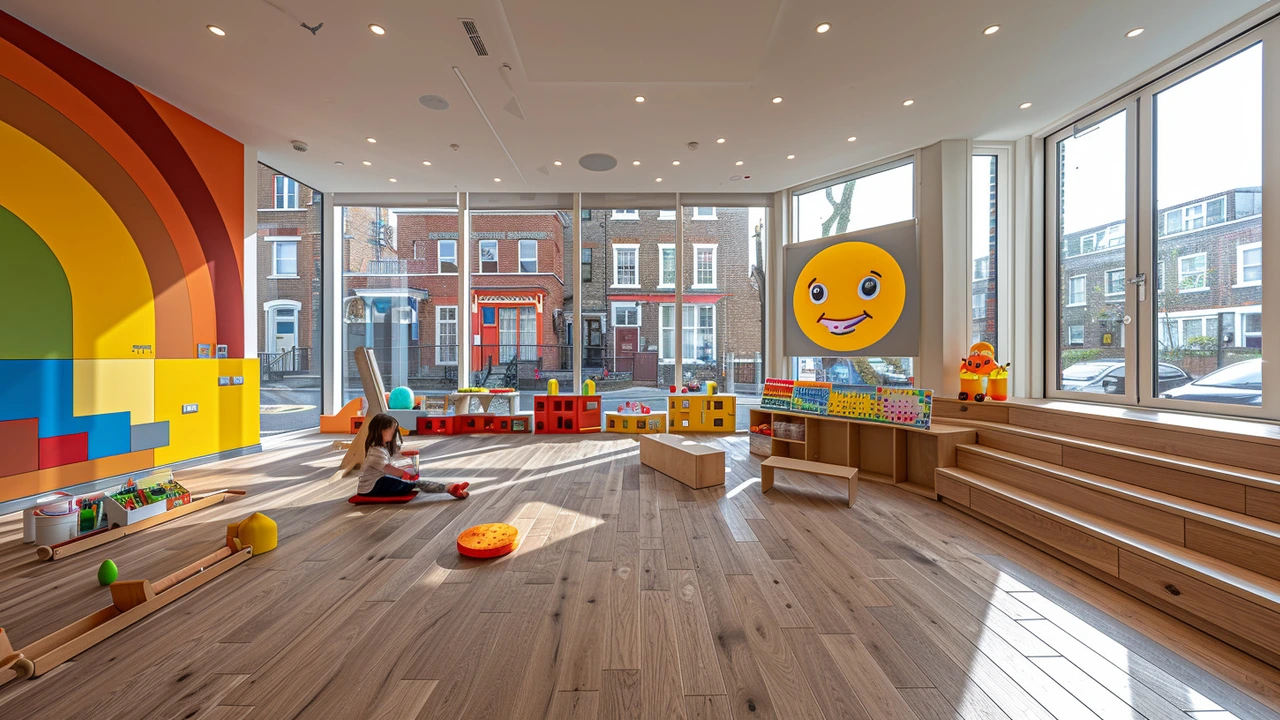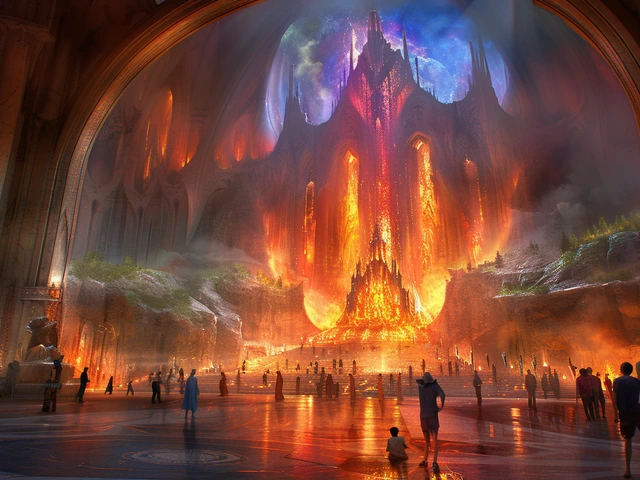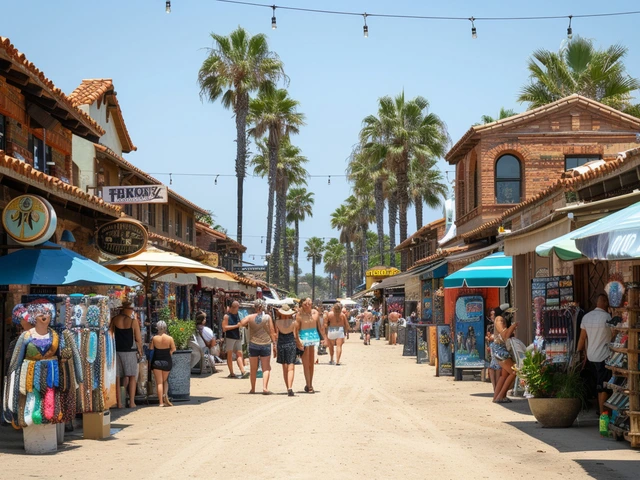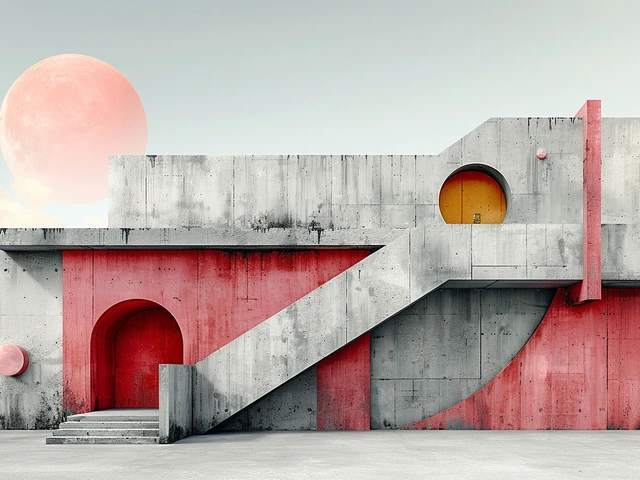Modern art, with its diverse and often unconventional forms, has a way of sparking curiosity and imagination. When integrated into the educational journey, it can be an incredible tool for developing young minds. This article dives into the fascinating intersection of modern art and education, exploring how these creative expressions can enhance learning experiences for children.
By introducing students to modern art, educators can unlock new avenues for learning and growth. Whether through painting, sculpture, or digital media, modern art enables children to view the world from different perspectives, fostering critical thinking and innovation. The following sections will explore various aspects of modern art in education, from its benefits to practical tips for incorporating it into everyday teaching.
- Understanding Modern Art
- Benefits of Modern Art in Education
- Incorporating Modern Art into the Classroom
- Long-term Impact on Students
Understanding Modern Art
Modern art, a term that refers broadly to artworks created in the late 19th and 20th centuries, breaks away from traditional techniques and perspectives. This movement began as artists sought new ways to express ideas, emotions, and reality itself, resulting in diverse styles and genres. From abstract expressionism and surrealism to cubism and pop art, modern art encompasses a rich tapestry of innovation and rebellion against convention.
One of the distinguishing features of modern art is its emphasis on experimentation and individuality. For instance, Vincent van Gogh's swirling night skies in The Starry Night or Piet Mondrian's geometric abstractions in Composition II in Red, Blue, and Yellow highlight a departure from realistic representations. These works compel viewers to engage more deeply, interpreting the artist's vision and finding personal meaning within the abstract forms.
Education through modern art encourages young minds to think beyond standard paradigms. For example, analyzing Pablo Picasso's fragmented and distorted forms in Guernica can help students understand the powerful communication of emotions and social critique through art. This engagement with art fosters a deeper appreciation and critical thinking, which are essential skills in educational development.
"Art has the power to transform, to illuminate, to educate, inspire and motivate." – Harvey Fierstein
Unlike traditional art forms, which often focus on realistic and historical themes, modern art invites students to explore and create without boundaries. This can be particularly liberating within an educational setting where creativity sometimes gets stifled by rigid structures. By engaging with modern art, students can experience the freedom of self-expression and the pleasure of exploring new ideas.
Moreover, modern art often intersects with significant historical and cultural moments. Movements such as Dadaism, emerging after World War I, questioned the very foundations of society and art. By studying these influences, students can gain a broader understanding of the cultural and historical contexts that shape artistic expression. This integration of art and history provides a richer, more interdisciplinary approach to learning, making education more dynamic and engaging.
When teachers introduce modern art into their curriculum, they not only diversify the educational material but also make learning a more engaging and interactive process. For example, creating projects inspired by modern art movements can help students grasp complex concepts in a fun and memorable way. Collaborations like these can cultivate a sense of community in the classroom, promoting teamwork and conversation among peers.
Benefits of Modern Art in Education
Modern art in education is not just about aesthetic appreciation; it plays a critical role in nurturing students' creativity and critical thinking skills. When children engage with modern art, they are exposed to different cultures, histories, and philosophies that broaden their understanding of the world. This exposure encourages them to think outside the box and develop their own unique perspectives.
One of the most significant benefits of incorporating modern art into the classroom is the improvement of creative problem-solving skills. When students analyze and interpret contemporary artworks, they learn to approach problems with an open mind and explore various solutions. This ability to think creatively is not only helpful in art but also in subjects like science and mathematics where innovative thinking can lead to breakthroughs.
Modern art also promotes emotional intelligence by helping students understand and express their emotions better. Many pieces of modern art engage with deep and sometimes complex emotions, providing children with a safe space to explore their own feelings. This can be incredibly therapeutic and beneficial for their mental health. According to a study conducted by the National Endowment for the Arts, students who participate in arts education programs show significant improvements in social and emotional skills.
Moreover, exposure to modern art boosts cultural awareness and empathy. Artworks often depict diverse lifestyles, struggles, and triumphs, which pave the way for discussions about social justice and history. These conversations encourage students to develop empathy and a deeper understanding of others' experiences. Art history lessons focusing on modern works can dismantle stereotypes and promote inclusivity.
Practical Benefits in Daily Learning
Incorporating modern art into daily lessons can make learning more engaging and fun. Visual stimuli from modern art can help capture students' attention and make abstract concepts more tangible. For instance, using abstract paintings to teach geometry or using contemporary sculptures to discuss physics brings these subjects to life in ways that traditional teaching methods may not.
Additionally, modern art can improve communication skills. When students are asked to interpret or create art, they need to articulate their thoughts and ideas. This form of expression enhances both their verbal and written communication skills. Discussions around art can also promote collaborative learning, as students often work together to analyze and critique pieces, building teamwork and respect for different viewpoints.
As Pablo Picasso once said, "Art washes away from the soul the dust of everyday life." This quote highlights the transformative power of engaging with art, which can rejuvenate and inspire students to view learning as an ongoing, creative journey.
Lastly, integrating modern art into education fosters a sense of accomplishment and confidence among students. Successfully completing an art project or understanding a complex modern artwork can greatly boost a student's self-esteem. This newfound confidence often transcends the art classroom, positively impacting academic performance in other areas.
When we integrate modern art into education, we are not just teaching children about colors and shapes; we are equipping them with essential life skills. Creativity, empathy, and critical thinking will help them navigate the complexities of the modern world. Next, we will explore practical ways to incorporate modern art into everyday learning environments.
Incorporating Modern Art into the Classroom
Incorporating modern art into the classroom can seem like a daunting task, but it’s actually quite manageable and incredibly rewarding. To start, it’s important to understand that modern art isn’t confined to a specific style or medium; it’s about creativity, expression, and innovation. By introducing students to various forms of modern art, from abstract paintings to multimedia installations, teachers can create a vibrant and engaging learning environment.
One approach is to integrate art projects that align with other subjects being taught. For example, when learning about history, students can create artwork inspired by different historical periods or movements. This not only makes the learning process more engaging but also helps to reinforce the material in a memorable way. In a science class, students might create sculptures using recycled materials, connecting environmental science lessons with creative expression.
Technology can also play a role in bringing modern art into the classroom. Digital art tools and software allow students to explore contemporary methods of creation, such as digital painting, graphic design, and even virtual reality art. These tools can make modern art more accessible and relevant to students, many of whom are already tech-savvy. Including technology in the art curriculum not only broadens students' creative options but also prepares them for the digital art world they are likely to encounter in their futures.
Field trips to local art galleries or exhibitions can provide students with firsthand experiences of modern art. These excursions can be coupled with classroom discussions and projects that allow students to reflect on what they have seen and how it relates to what they are learning. Additionally, inviting local artists to conduct workshops or speak about their work can provide valuable insights and inspiration for students. This real-world connection can make art feel more accessible and achievable.
Creating a classroom environment that celebrates and encourages artistic expression is key. Designating a corner of the classroom as an “art station” stocked with various materials, or even having an “art wall” where students can display their work, can foster a culture of creativity. Regularly changing the themes or types of art materials available can keep students engaged and excited about exploring new artistic avenues.
As noted by Elliot Eisner, a leading figure in art education, “The arts teach children to make good judgments about qualitative relationships.” This perspective highlights the intrinsic value of art in helping students develop critical thinking, problem-solving, and decision-making skills. Incorporating modern art into the classroom is not just about making things look pretty; it's about teaching children to think and see in new and profound ways.
Modern art can also be used to address social and emotional learning (SEL) by encouraging students to express their feelings and thoughts through their creations. Art can be a powerful tool for exploring identity, emotions, and personal stories, providing students with a safe and supportive outlet. Teachers can guide reflective discussions on the artwork, helping students articulate their thoughts and develop empathy by understanding the diverse perspectives of their peers.
When incorporating modern art into teaching strategies, it’s crucial to encourage experimentation and risk-taking. Modern art often pushes boundaries and challenges conventional ideas, and students should feel free to do the same without fear of making mistakes. This environment of exploration not only boosts creativity but also builds resilience and confidence in students.
By weaving modern art into various aspects of the curriculum, educators can nurture well-rounded, creatively inclined learners. These students not only develop an appreciation for the arts but also gain valuable skills that will serve them in all areas of life. Whether through integrating art into different subjects, leveraging technology, providing real-world experiences, or fostering a nurturing creative environment, the impact of modern art in education is profound and far-reaching.
Long-term Impact on Students
The influence of modern art in education extends far beyond the classroom. When children engage with modern art, they develop a host of skills that are invaluable in their personal and professional lives. These skills can significantly impact their future, making them more adaptable and innovative thinkers.
One of the most notable long-term benefits is the enhancement of critical thinking skills. Engaging with various forms of modern art encourages students to analyze, interpret, and evaluate different perspectives. This analytical approach transcends art and can be applied in problem-solving across diverse fields. Employers highly value individuals who can think critically and approach problems creatively.
Another significant impact is the promotion of emotional intelligence. Modern art often explores complex themes and emotions, allowing students to connect with and express their feelings in a healthy way. This emotional awareness is vital for building empathy and understanding in social interactions. It also contributes to better mental health, as students learn to navigate and articulate their emotions effectively.
Studies have shown that exposure to art can improve academic performance in other subjects. For instance, a study by the National Endowment for the Arts found that students who participate in arts education are four times more likely to be recognized for academic achievement. This correlation exists because art education promotes skills such as perseverance, collaboration, and attention to detail, which are transferable to other academic areas.
According to Sir Ken Robinson, an advocate for transforming education, "Creativity is as important now in education as literacy, and we should treat it with the same status."
Moreover, modern art fosters a sense of cultural awareness. Through exposure to diverse artworks, students gain insights into different cultures and historical contexts, fostering a more inclusive worldview. This understanding is crucial in our increasingly interconnected world and helps students become open-minded global citizens.
Participation in modern art can also enhance self-confidence. Creating art allows students to take risks and experiment with new ideas. Overcoming creative challenges and succeeding in artistic endeavors builds their confidence and encourages a growth mindset. These qualities are essential for lifelong learning and personal development.
In addition, modern art can spark an enduring passion for creativity and innovation. Students who develop a love for art are more likely to pursue careers that value creativity, whether in the arts themselves or in fields like technology, marketing, and business. This passion can lead to fulfilling careers and continuous personal growth.
Finally, modern art instills in students a lifelong appreciation for beauty and creativity. This appreciation enriches their lives, providing a constant source of inspiration and joy. Whether they become artists, patrons, or simply enthusiasts, their engagement with modern art will continue to enhance their lives in numerous ways.




